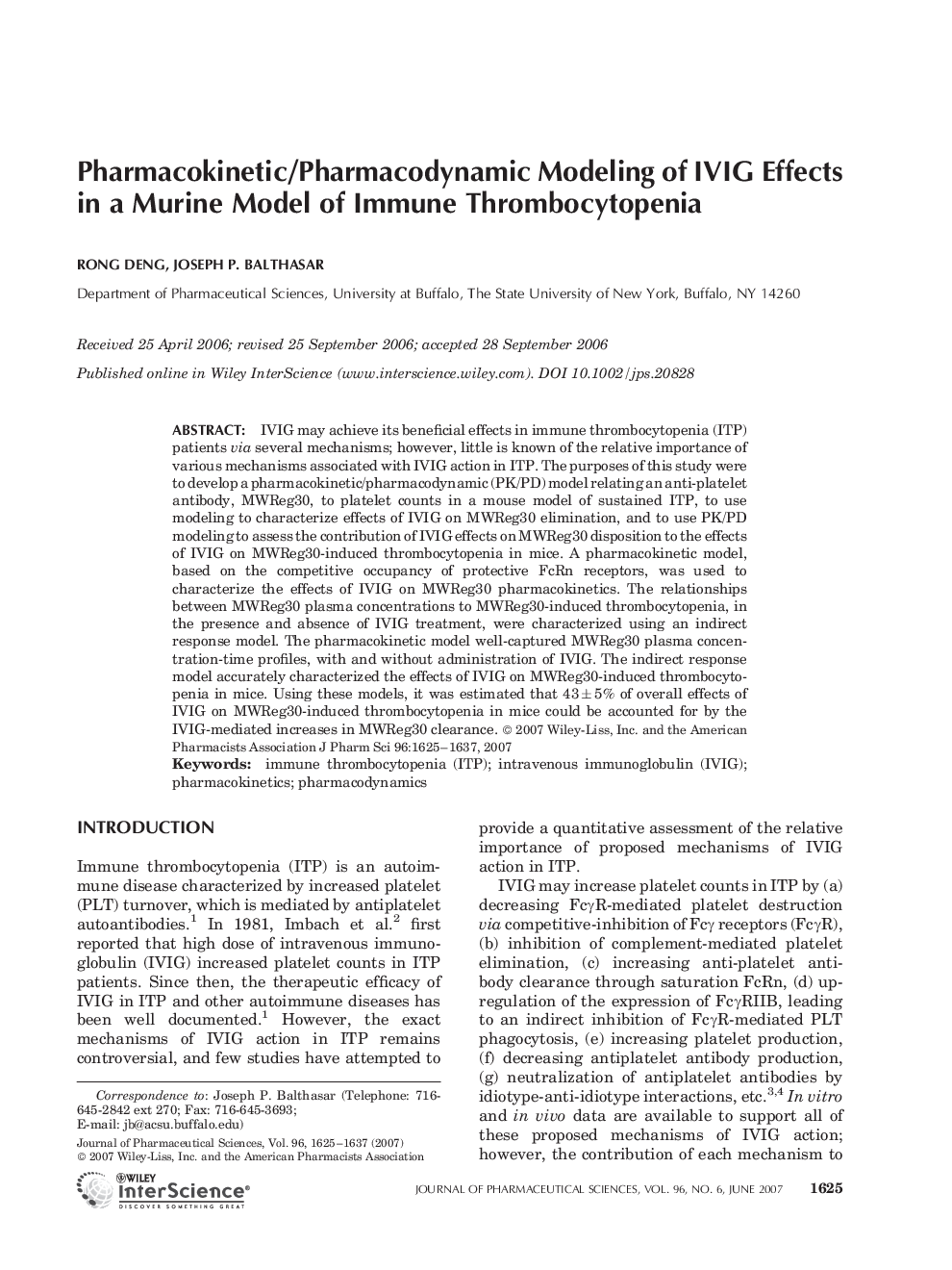| Article ID | Journal | Published Year | Pages | File Type |
|---|---|---|---|---|
| 2487781 | Journal of Pharmaceutical Sciences | 2007 | 13 Pages |
Abstract
IVIG may achieve its beneficial effects in immune thrombocytopenia (ITP) patients via several mechanisms; however, little is known of the relative importance of various mechanisms associated with IVIG action in ITP. The purposes of this study were to develop a pharmacokinetic/pharmacodynamic (PK/PD) model relating an antiâplatelet antibody, MWReg30, to platelet counts in a mouse model of sustained ITP, to use modeling to characterize effects of IVIG on MWReg30 elimination, and to use PK/PD modeling to assess the contribution of IVIG effects on MWReg30 disposition to the effects of IVIG on MWReg30âinduced thrombocytopenia in mice. A pharmacokinetic model, based on the competitive occupancy of protective FcRn receptors, was used to characterize the effects of IVIG on MWReg30 pharmacokinetics. The relationships between MWReg30 plasma concentrations to MWReg30âinduced thrombocytopenia, in the presence and absence of IVIG treatment, were characterized using an indirect response model. The pharmacokinetic model wellâcaptured MWReg30 plasma concentrationâtime profiles, with and without administration of IVIG. The indirect response model accurately characterized the effects of IVIG on MWReg30âinduced thrombocytopenia in mice. Using these models, it was estimated that 43â±â5% of overall effects of IVIG on MWReg30âinduced thrombocytopenia in mice could be accounted for by the IVIGâmediated increases in MWReg30 clearance.
Keywords
Related Topics
Health Sciences
Pharmacology, Toxicology and Pharmaceutical Science
Drug Discovery
Authors
Rong Deng, Joseph P. Balthasar,
